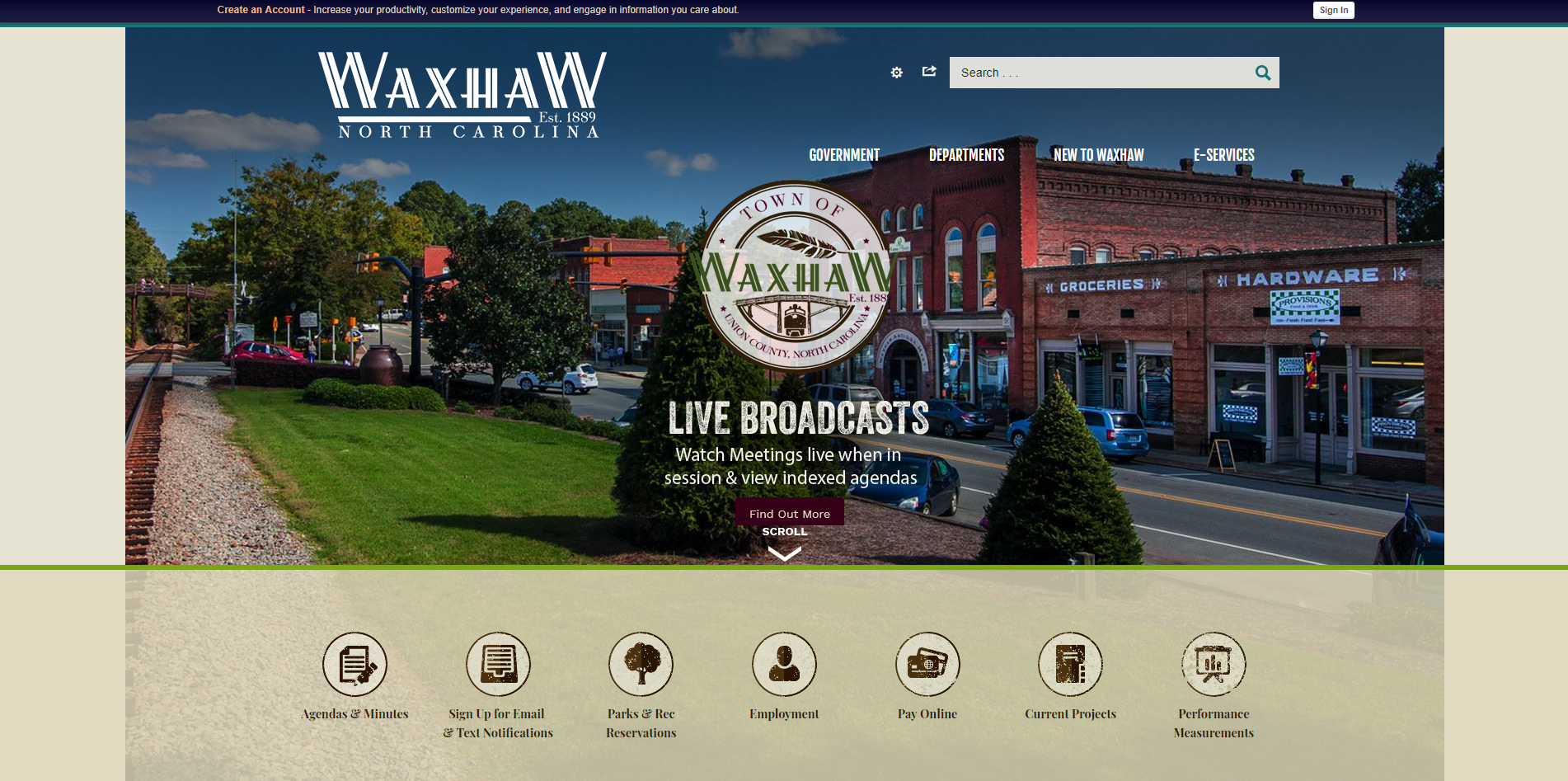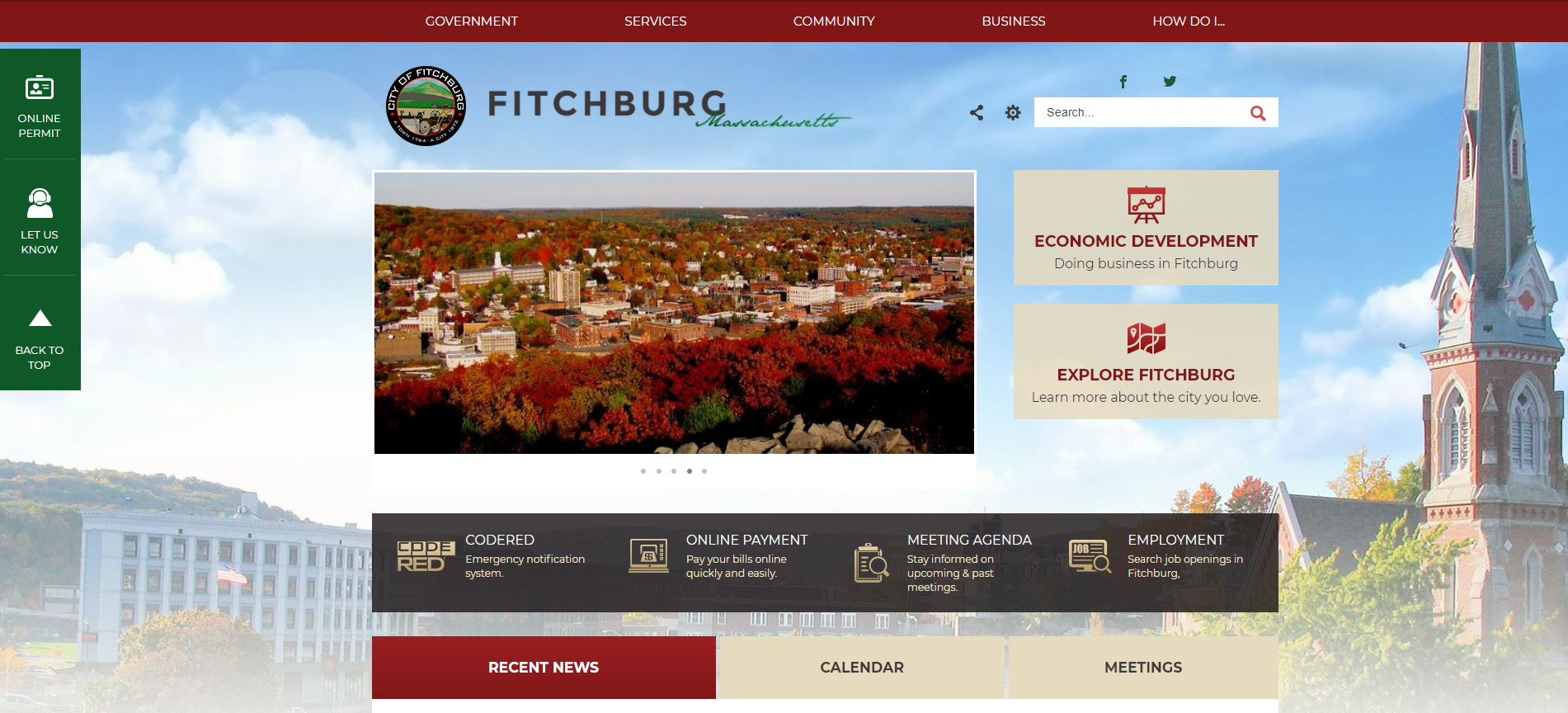For many small towns, websites are the main avenue of communication with residents. At the Environmental Finance Center at the University of North Carolina at Chapel Hill, we use town websites to find contact information, water rates, and link towns around the United States to our resources, such as our water rates dashboards. The North Carolina Water Rates Dashboard is one of our most visited pages, and nearly three percent of the dashboard’s visitors in the past year have been directed here through the website of the town of Wilkesboro, North Carolina. Wilkesboro’s website is user-friendly and informative, making it a great resource for residents and visitors alike. Residents often rely on town websites for communication, public information, and access to helpful tools like our Rates Dashboards.
The following five town websites stand out as both visually appealing and easy to navigate, with special attributes that make them particularly engaging:
1. Nantucket, Massachusetts
Nantucket’s website gives the impression of a serene, seaside village. Town departments are easy to find, and the staff directory is easily accessible. The homepage is also very light on text, which keeps viewers from being overwhelmed by information.

Source: nantucket-ma.gov
Tip to Take Away: Make Sure Your Homepage is Simple and Inviting
When residents first open your website, are they immediately greeted by festive pictures of town parades and mountain sunsets, or clunky text boxes and disorganized calendar updates? A beautiful and simplistic homepage will make residents more likely to consult your website for information, and less likely to call your busy town clerk. As in the case of Nantucket, your homepage should be light on text and give viewers a sense of your town’s personality. If you decide to include town updates on your homepage, make sure they are up-to-date.
2. Oak Island, North Carolina
Oak Island also has an attractive layout, complete with scrolling pictures of beach scenes and sea turtles. Employees’ emails are easy to find, and a staff directory is conveniently located under “Departments.”

Source: oakislandnc.com
Tip to Take Away: Include a Staff Directory
If I’m a resident and I need to call the town finance director, the first place I will look is the staff directory. Make sure your staff directory is complete with phone numbers and email addresses, like Oak Island’s. Try and stay away from pesky email forms, which frustrate visitors and discourage people from contacting your town with their questions. An easily located staff directory will save residents a lot of hassle.
3. Brevard, North Carolina
Brevard also has an inviting home page, but, unlike the previously mentioned sites, town water rates are an additional resource made available. Posting up-to-date water rates means residents can easily find information about their bills, increasing communication and transparency with utility customers.

Source: cityofbrevard.com
Tip to Take Away: Post Your Water Rates (and any other town fees)
This is one tip that applies to a majority of towns (and is a big help to the EFC at UNC). When we conduct our annual water and wastewater rates surveys, we search town websites for water rates before ever sending an email. Having your water and wastewater rates posted under “Public Works” or “Utilities” will also help residents look up questions about their bills, instead of calling the town hall or water utility. A “Frequently Asked Questions” section is another useful tool to help ratepayers understand their bills. If your rates are posted online, be sure to keep them updated each year.
4. Waxhaw, North Carolina
The Waxhaw website’s rustic, hometown feel is representative of the town’s recent rebranding efforts. At the bottom of the page, residents can follow the town on Twitter, Facebook, Instagram, and even LinkedIn. Who knew towns could have their own LinkedIn pages?

Source: waxhaw.com
Tip to Take Away: Always Include Town Contact Information at the Bottom of the Page
This is the most simple and important change a town can make to their website. A town hall’s main phone number should always be listed at the bottom of the homepage. Residents should always feel like town employees and elected officials are easily accessible and willing to answer questions. Having a phone number clearly visible on the website and a “Contact Us” tab is an important first step. Waxhaw does a great job of making the town accessible and linking residents to social media.
5. Fitchburg, Massachusetts
Fitchburg’s website features an attractive church steeple background, with scrolling photos of the quaint Massachusetts town. Another nice aspect of the website is that the tabs at the top of the page are clearly organized and make information simple to locate, increasing user-friendliness and ease of navigation.

Source: ci.fitchburg.ma.us
Tip to Take Away: Include Clear Tabs with Important Town Departments
On almost all of these websites, there is a “Government” tab at the top of the page, which drops down to reveal all town departments. This is the quickest way for residents to navigate your website. Keep this tip in mind: if someone is on your website, it’s because they need information about something. Make sure that information can be found easily.
What do all these towns have in common? Their websites are charming, engaging, and make information easy to find. Follow these simple steps and use the examples above to give your own town’s website the appeal and clarity it needs. Your website is your residents’ most direct link to town government, so use these tips to construct a website that will impress town residents and improve communication between your town hall and its citizens.


